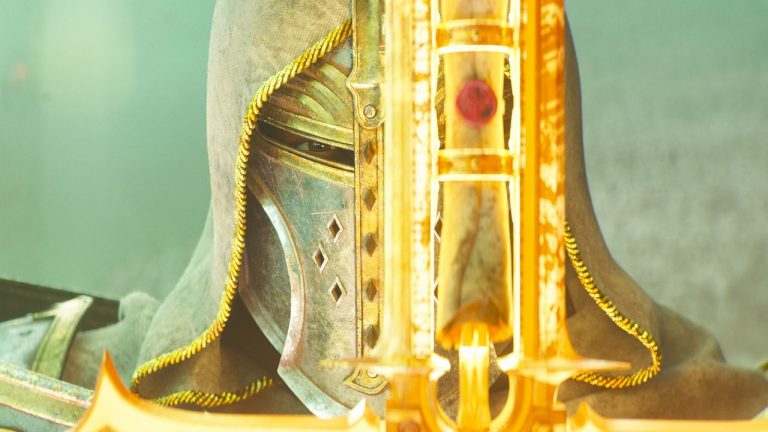Be honest: When you play Civilization, do you dutifully guide your subjects from the dawn of history to the moon landing, or do you get bored sometime around the Renaissance and start over? If you’re the dutiful type, you’re in the minority: Firaxis has been collecting statistics, and although it wouldn’t share specifics, the developer told me it was surprised to discover how few Civilization players had finished a game of Civilization.
In response to this revelation, Firaxis has substantially changed Civilization’s structure for the next game, which is out in February. In Civilization 7, you no longer begin in the Ancient era, advancing through and beyond the Classical, Medieval, Renaissance, Industrial, and Modern eras. There are just three ages in Civilization 7—Antiquity, Discovery, and Modern—and the tech tree has been somewhat simplified.
(Image credit: Firaxis)
Excited to find out what’s new in Civilization 7 but just want the bullet points? You got it: Here’s a list of all the new features I saw during my hands-on with Civ 7.
It might turn out to be the most controversial change since Civilization 5 ditched unit stacking, or since Civilization 6 adopted a cartoonier art style (which has been walked back in Civ 7). But before the word “simplified” causes too much anxiety, I should elaborate: I think the changes are exciting, and Firaxis has also added, tweaked, and expanded. You can now build towns, not just cities. There are powerful new units called Commanders. You’ll find navigable rivers for the first time (yes!), so you can have your own Mississippi or Nile. Major features from the Civ 5 and 6 expansion packs are here, including religion and natural disasters.
It’s still Civilization, a judgment I arrived at after playing for three hours, and that creative director Ed Beach, who was also the lead designer of Civilization 6, expresses in numbers.
“We’re very mindful of exactly how much we were changing,” Beach said to a group of press, including myself, who were flown to Firaxis’s office in early August to try the game. “You’ve probably heard the Firaxis mantra that 33% of the game stays the same, 33% of it gets updated, and 33% is brand new. We absolutely followed that again.”
Layer cake
Here’s one big change: Despite leading Rome, I played as Egyptian pharaoh Hatshepsut. Your leader no longer has to match your civilization.
This relates to a key part of the new three-act structure: In the transition to a new age, you’ll select a new civilization. Each age has unique civs, and the choices available depend on your leader, but also what you’ve accomplished so far. If you’ve amassed a huge stable of powerful cavalry units, for instance, you might be granted the option of swapping to Mongolia for the Exploration age.
Walls can now be built around each city district. (Image credit: Firaxis)
Beach’s big theme for Civilization 7 is the idea that “history is built in layers.” The thought was inspired by London, which began as Roman outpost Londinium before being abandoned, occupied by the conquering Normans, and then transformed by the Industrial Revolution.
“Now we have a new version of Civilization where I can play a single pathway through history, and I get to be the Romans, I get to be the Normans, and then I get to be Britain,” he said.
In the transition to a new age, old buildings lose their special effects and adjacency bonuses, so you’ll be encouraged to literally build in layers, replacing the old with the new. The pre-defined districts of Civ 6 have been dropped in favor of general urban districts that the player defines by the buildings they opt to place in them. Cities should be more compact as a result.
Along with sub-goals that break up the journey toward one of Civ’s victory conditions, getting to adopt a new culture’s architecture, units, and bonuses along the way—an idea you’ll also find in 2021 strategy game Humankind—might just tempt me to finally start sticking things out to the end. It’s hard to say, though, because Civ’s early game remains as compelling as ever, and some of the changes in Civ 7 make it even more exciting.
Settling in
One of those changes has to do with how cities come to be in the first place. Settler units now found towns instead of cities, which are a much more sensible thing to found, I think. Don’t get ahead of yourself!
Improvements are now constructed automatically when a new land tile is annexed by a city.
Towns are like cities, but have no production queue. Instead, their productive capacity is converted directly into gold for your coffers. You can add buildings to towns, but only by purchasing them. You can spend gold to transform a town into a proper city, but you don’t have to. You can leave your town as a town, and optionally select a permanent specialization, turning it into a mining town, a farming town (which includes a fishing bonus), a trading outpost, or a military fort. Strategic Civ players already specialize their cities; now there’s a built-in way to optimize your settlements based on their geographic and political situation.
I like this change a lot, not because I care about mix-maxing, but because my love of expansion conflicts with my desire to actually manage 12 cities. In Civ’s blissful early game, when I’m making my most creative and consequential decisions, I enjoy sticking cities wherever I think cities should go, sometimes for purely aesthetic reasons. If I see a cute bay with fish, you better believe I’m hitting it with a cute bayside fishing town. But now it can actually be a fishing town.
I love the waterfall, although I’m not sure where the water is coming from. Sewage? (Image credit: Firaxis)
My overall impression of Civ 7 is that Firaxis has sought to remove low-impact decisions—stuff players always do, or choices they don’t take seriously—while emphasizing actually important decisions.
A good example of this trend is the removal of Workers. RIP to the little guys you previously had to send hiking across the countryside to build land improvements like farms and mines. Improvements are now constructed automatically when a new land tile is annexed by a city. However, cities no longer expand into new tiles automatically. You’re instead prompted to choose a new tile whenever a city grows. With that new level of control, I developed my capital, Rome, as a very long city, capturing resources on the either side of a river.
Spreading influence
Barbarians are gone, replacing another obvious choice (beat up on the barbarians) with something slightly more complex, if not by much. Replacing the early game foes are Independent Powers, who may or may not be hostile. If they’re peaceful, you can spend the new Influence resource to befriend them. If they’re allowed to develop, they’ll later form a city-state, and getting on their good side is helpful if you want to become their suzerain.
Natural disasters are back, so enjoy that fertile volcanic soil with caution. (Image credit: Firaxis)
Influence can also be spent to cooperate with or sabotage other nations. It’s an all-purpose diplomacy currency, basically, and might be too universal. I could spend it to enthusiastically accept a neighboring country’s proposal for an international farmer’s market, and also to sanction them or attempt to infiltrate their military.
The system did get me more involved in international relations than I usually am early in a Civ game: I used Influence to befriend an independent power, to make military pacts that increased my unit strength, and to weaken my antagonistic neighbor, Egypt—which by the way was run by Roman emperor Octavian, who traded places with Hatshepsut.
In command
I concluded my session in the middle of a protracted war between Egyptian Rome and Roman Egypt.
The AI leaders still behave like kids who are making things up as they go, leaping from negotiations over fruits and vegetables to declarations of war, but I’m not sure more human-like computer players would be a profitable area for Firaxis to invest in. If they behaved like real players, the AI leaders would probably focus all their early-game energy on building cool Wonders and then quit the first time they suffered a significant military loss.
Oh no, a giant tank outbreak! (Image credit: Firaxis)
I concluded my session in the middle of a protracted war between Egyptian Rome and Roman Egypt that I refused to end—mainly out of spite, but also because I wanted to play with the new Commander units. They are now the only units that get promotions, which buff their abilities or the abilities of units around them. More interestingly, you can stack multiple units ‘inside’ a commander, send them to the front line, and then unpack them. Commanders can also issue orders to nearby units, telling them to focus fire on a particular enemy, for instance, which confers bonuses. There’s a whiff of XCOM here: I can imagine getting quite attached to a max level general who’s overseen my greatest military victories.
As curious as I am about big additions like Commanders and the new three-age structure, I walked away most excited by little tweaks to ancient Civ conventions, like the addition of towns. Even smaller, but also exciting: When you tell a unit to fortify, it actually builds a fortification, and Scouts can now put up little watchtowers to see further—I love that.
(Image credit: Firaxis)
But there are also good signs for Firaxis’ plan to get more of us to play Civ games till the end. One, I’m curious to experience a Crisis event—I didn’t get that far in my session, but I’m told that these events act as climaxes to the first two ages, requiring players to select a series of Crisis policies that negatively affect their civs.
And beyond that, I’ll be interested to know just how different the Exploration and Modern ages are from Antiquity. During our brief interview, Beach gave me some hints about what to expect in the Exploration age. It’s themed around the part of any Civ game (and of world history) when deep ocean tiles become traversable, and you start to discover what’s going on outside of your own continent. Exploring “the distant lands,” as they’re called in Civ 7, will lead to the discovery of valuable new resources.
The real history of global exploration is of course more complex than that—not everyone went exploring, and those who did violently exploited the people they found. Civ isn’t meant to be an accurate replay of history. Still, I already know that I want to try to defy Civ 7’s structure and themes to, for instance, play an isolationist nation during that second act, engaging with just a few foreign traders from behind my walls. That’s the plight of a game designer, I guess: Give us a clear structure and themes to help us progress through the game and take advantage of all its systems, and of course the first thing we want to do is reject them. (Perhaps a related impulse to Civ 4 designer Soren Johnson’s observation that “given the opportunity, players will optimize the fun out of a game.”)
Civilization 7 will release on February 11, 2025. It’s coming to Windows, Linux, and Mac at launch (here’s its Steam page), as well as the consoles.












